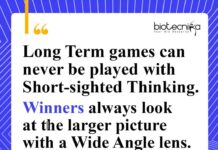UCLA scientists succeed in ‘jump-starting’ a comatose man’s brain for the first time
We’re getting better at predicting when a patient might come out of a coma, but helping them recover is another matter. Even after a patient wakes up, the effects of being in a persistent unconscious state can result in severe brain injury. Recovery can take ages, but doctors at UCLA are testing a new treatment that could speed things up dramatically: using low-intensity focused ultrasound pulsation to “jump-start” a patient’s brain.
The research is still early, but it seems to be working for at least one 25-year-old patient, who showed “remarkable” improvement after the treatment. Before doctors used sonic stimulation to rouse the neurons in the patient’s thalamus, a structure in the brain that relays sensor signals and helps regulate alertness, he showed little conscious response and had trouble understanding speech. Within days of treatment, however, the patient was fully awake, responsive to conversation and actively communicating with nods and gestures.
In a report published in the journal Brain Stimulation, the UCLA team said the treatment may be successful in treating severe brain injury. To treat the young man, they used a small device that creates low-intensity focused ultrasound pulsations to target and stimulate specific parts of the brain, according to the report. They placed the device next to his head for 30-second bursts over a 10-minute period, the report explained.
The technique uses sonic stimulation to excite the neurons in the thalamus, an egg-shaped structure that serves as the brain’s central hub for processing information. “It’s almost as if we were jump-starting the neurons back into function,” said Martin Monti, the study’s lead author and a UCLA associate professor of psychology and neurosurgery. “Until now, the only way to achieve this was a risky surgical procedure known as deep brain stimulation, in which electrodes are implanted directly inside the thalamus,” he said. “Our approach directly targets the thalamus but is noninvasive.”
Monti said the researchers expected the positive result, but he cautioned that the procedure requires further study on additional patients before they determine whether it could be used consistently to help other people recovering from comas.
“It is possible that we were just very lucky and happened to have stimulated the patient just as he was spontaneously recovering,” Monti said.
The UCLA team was amazed at how the treatment seemed to work. They said the young coma victim showed only minimal signs of consciousness before the treatment. After one day of treatment, however, they said they noticed a significant improvement. After three days, the research team said the young man regained full consciousness, nodded his head and made a fist-bump gesture to one of his doctors.
Research into the experimental treatment continues.
If the technology helps other people recovering from coma, Monti said, it could eventually be used to build a portable device — perhaps incorporated into a helmet — as a low-cost way to help “wake up” patients, perhaps even those who are in a vegetative or minimally conscious state. Currently, there is almost no effective treatment for such patients, he said.
The study’s other co-authors are Vespa, who holds UCLA’s Gary L. Brinderson Family Chair in Neurocritical Care and is director of neurocritical care at the Ronald Reagan UCLA Medical Center; Caroline Schnakers, a UCLA neurosurgery researcher; and Alexander Korb, a Semel Institute researcher.





























